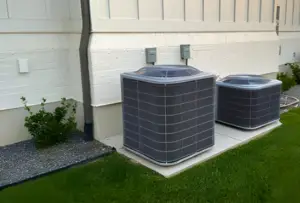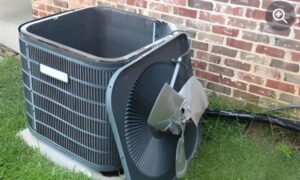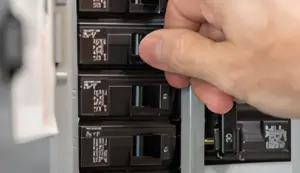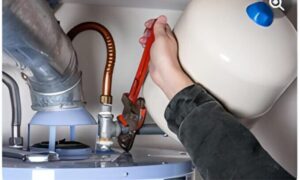In the world of heating systems, a hidden danger lies within the faultiness of flame sensors. These small but crucial components can pose a significant hazard if not properly maintained or replaced.
A malfunctioning flame sensor can result in the shutdown of the furnace, potentially leaving you in the cold during the winter months. But that's not all – the continuous emission of gas without ignition can lead to the accumulation of hazardous gases in your home. The consequences are dire, making it imperative to address any issues with flame sensors promptly.
Stay tuned as we explore the signs of a faulty flame sensor, the proper cleaning and testing procedures, and the importance of relying on professional technicians to handle such matters.
Don't take any chances when it comes to your safety and comfort.
Effects of a Bad Flame Sensor
A malfunctioning flame sensor can have detrimental effects on the performance and safety of a furnace.
One of the immediate effects is that the furnace shuts down if the flame sensor fails to detect a flame. This can lead to a build-up of gas without ignition, posing a serious safety hazard.
Additionally, continuous tampering with a faulty flame sensor can cause issues with other furnace parts, further impacting the overall performance and efficiency of the system.
It is important to note that most furnaces go into safety ignition lockout after three shutdowns, indicating the need for immediate attention.
Therefore, it is crucial to recognize the signs of a bad flame sensor and take appropriate action, such as cleaning or replacing the sensor, to ensure the proper functioning and safety of the furnace.
Signs of a Bad Flame Sensor
Common indicators of a faulty flame sensor can be identified through careful inspection and observation. Here are five signs to look out for:
- Sooty, burnt, or corroded insulation may only require cleaning.
- Missing or cracked insulation indicates the need for sensor replacement.
- Switch off power and close gas valve before inspecting the sensor.
- Outsourcing the replacement to professionals reduces the risk of preventable issues.
- Continuous tampering with a faulty flame sensor can cause issues with other furnace parts.
Cleaning a Furnace Flame Sensor
To properly clean a furnace flame sensor, it is essential to follow a detailed and technical process to ensure optimal functionality and safety.
If you choose to clean the sensor yourself, you will need a wrench or driver, light grain sandpaper, and a clean cloth or paper towel.
Start by shutting off the power and locating the sensor in the burner assembly. Remove the screw and gently rub the rod with sandpaper, steel wool, or a wire brush to remove carbon buildup.
Afterward, wipe the rod down with a clean cloth or paper towel.
It is important to note that the preferred option is to have HVAC technicians clean the sensor during regular furnace tune-ups.
Testing a Flame Sensor
To ensure the proper functioning of your furnace flame sensor, it is necessary to conduct a thorough and precise test. Here are the steps to test a flame sensor:
- Turn off the power to the furnace or unplug the device.
- Use a driver or wrench to unfasten the screw and carefully pull out the sensor.
- Use a multimeter to check resistance by touching the probes to the white and blue wire ports.
- Place the open end of the sensor against a test lamp or 60-watt bulb and check for high resistance on the multimeter.
- If there is no resistance discrepancy when exposed to light, it indicates a faulty flame sensor and it should be replaced.
Dependable Heating Repair Technicians in Murrieta
Action Air Conditioning, Heating & Solar is a reputable HVAC and solar company with over 45 years of industry experience. We offer dependable heating repair technicians in Murrieta and the surrounding neighborhoods. Our NATE-certified technicians have expertise in flame sensors and other HVAC issues and have been recognized as the Best HVAC company in The San Diego Union-Tribune Readers Poll. We provide professional services that guarantee professionalism and efficiency. Our technicians are well-versed in diagnosing and repairing faulty flame sensors, ensuring the safe and efficient operation of your heating system. With our extensive experience and knowledge, we are equipped to handle any heating repair needs in Murrieta and the surrounding areas. When it comes to dependable heating repair technicians, you can trust Action Air Conditioning, Heating & Solar to deliver exceptional service and peace of mind.
Frequently Asked Questions
How Often Should a Flame Sensor Be Cleaned or Replaced?
The frequency of cleaning or replacing a flame sensor depends on various factors such as furnace usage, maintenance, and the condition of the sensor. It is recommended to have HVAC professionals assess and clean the sensor during regular furnace tune-ups to ensure optimal performance and safety.
Can a Faulty Flame Sensor Cause a Fire or Explosion?
A faulty flame sensor can potentially cause a fire or explosion if it fails to detect a flame and allows gas to continue emitting without ignition. Prompt replacement of the sensor is crucial to prevent this dangerous situation.
Are There Any DIY Methods to Temporarily Bypass a Faulty Flame Sensor?
There are no recommended DIY methods to temporarily bypass a faulty flame sensor. It is crucial to address the issue by contacting a professional HVAC technician to ensure the safety and proper functioning of the furnace.
How Much Does It Typically Cost to Replace a Flame Sensor?
The cost to replace a flame sensor can vary depending on the make and model of the furnace, as well as the location and the HVAC company hired. It is recommended to contact a professional HVAC technician for an accurate estimate.
Can a Bad Flame Sensor Affect the Performance of Other Appliances in the Home?
Yes, a bad flame sensor can affect the performance of other appliances in the home. It can lead to issues such as improper ignition, increased energy consumption, and potential safety hazards. It is recommended to consult HVAC professionals for proper diagnosis and resolution.
Conclusion
In conclusion, it is crucial to address and rectify faulty flame sensors in furnaces to prevent potential hazards and ensure the efficient functioning of the heating system.
Identifying signs of a bad flame sensor, such as sooty or corroded insulation, and taking appropriate steps to clean or replace the sensor can help maintain a safe and effective heating system.
In cases where professional assistance is required, Action Air Conditioning, Heating & Solar offers reliable services with experienced technicians in Murrieta and surrounding areas.









